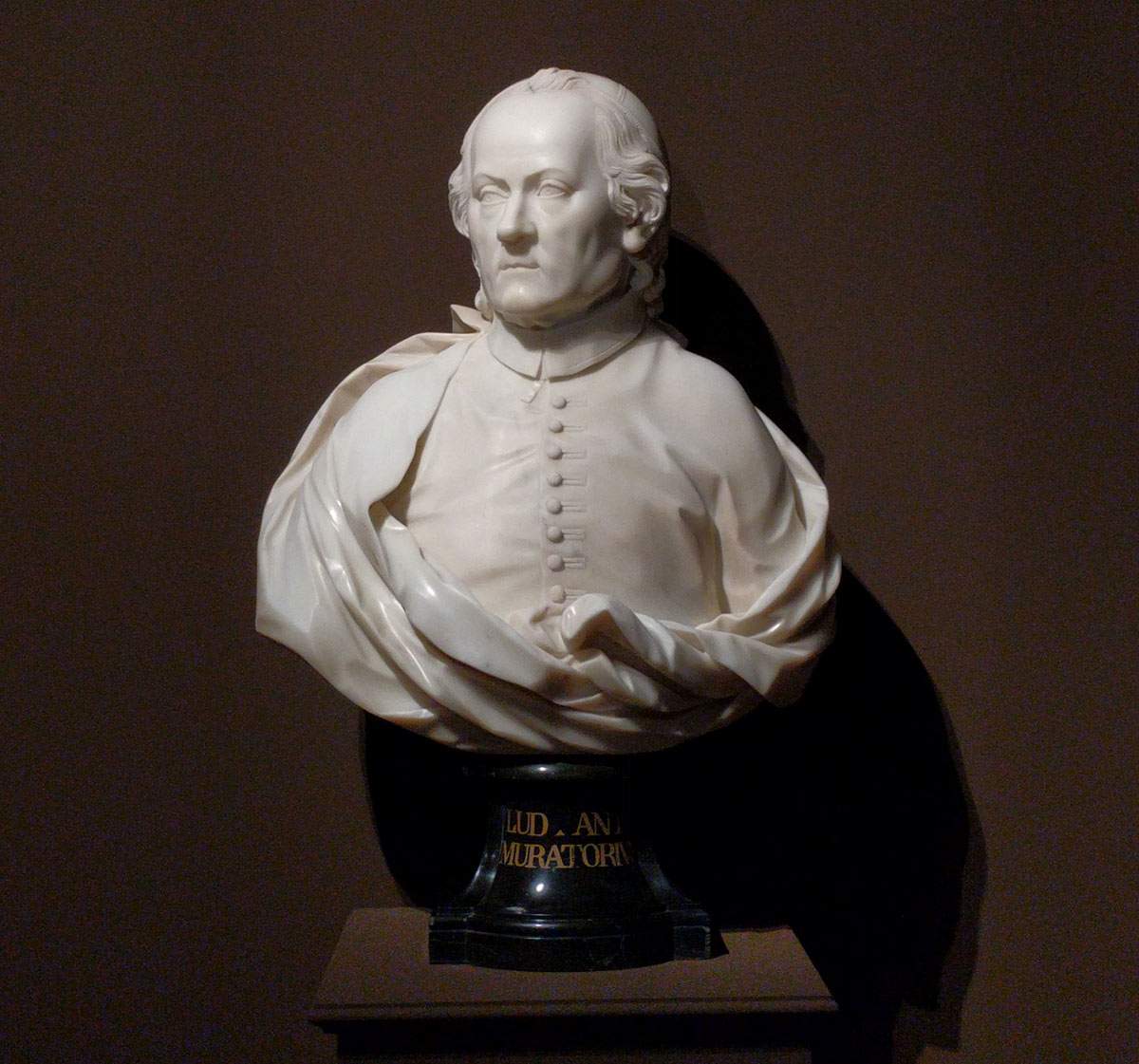An exhibition at the Galleria Estense in Modena, from October 25, 2019, to March 15, 2020, brings together for the first time the nucleus of works from Modena by the great Giovanni Antonio Cybei (Carrara, 1706 - 1784), one of the most important sculptors of the eighteenth century, long active in Italian and European courts, a proponent of a versatile language capable of moderating Baroque dramatic emphasis with more succinct and graceful formulas, which ensured his fortune among high Italian patrons and the courts of Europe and Russia.
The exhibition, entitled Giovanni Antonio Cybei. A Great Sculptor for Modena, is curated by Martina Bagnoli, director of the Estensi Galleries, and Federico Fischetti, curator of the Estensi Galleries. The two recently restored marble busts of two Modena historians, Carlo Sigonio and Ludovico Antonio Muratori, commissioned to decorate the Biblioteca Estense Library, will be on display alongside their terracotta models, as well as the painted plaster cast of the equestrian monument of Francesco III d’Este.
Cybei arrived in Modena in 1772, when he was director of theAcademy of Fine Arts in Carrara, at the height of his work as a sculptor. The City Council had decided to entrust him with the creation of an equestrian statue to Duke Francis III, to be placed in one of the squares in the historic center. This strengthened Modena’s bond with the great Este sculptural tradition, which had seen such authors as Antonio Lombardo, Guido Mazzoni Antonio Begarelli, Prospero Sogari known as il Clemente, and Gian Lorenzo Bernini work in the city, whose works are still preserved in the halls of the Gallery. The artist’s choice depended in large part on the dynastic bond combined with the marriage of the duke’s son and heir, Ercole Rinaldo, to Maria Teresa Cybo Malaspina, herself heir to the duchy of Massa and princess of Carrara. In fact, Modena, with Massa and Carrara, had acquired an outlet to the Tyrrhenian Sea, opening up new perspectives, not only politically but also in the artistic field. Carrara in fact was the center of the mining of the prized marble of the Apuan Alps, around which the activities of stonemasons, sculptors and merchants had always flourished.
Having received a portrait of Duke Francis III, Cybei set to work elaborating ideas he had also matured in his youth when, as assistant to sculptor Agostino Cornacchini, he participated in the creation of the equestrian monument of Charlemagne for St. Peter’s Basilica in Rome. The marble colossus, divided into three parts, was shipped by ship and after a long voyage around the peninsula arrived in Venice, until it sailed up the Po and then the Panaro and reached the canals of Modena to the ducal dockyard. In the meantime its final home had been chosen in Piazza Sant’Agostino, where it was put in place and finished by Cybei himself and his collaborators above a base adorned with epigraphs composed by the librarian Girolamo Tiraboschi, celebrating the exploits and reforms of Duke Francis III. The inauguration, on Sunday, April 24, 1774, was spectacular and included a horse palio, a costumed Roman triumph, the city center lit by thousands of flashlights, and a grand evening ball in the theater. But beyond the rhetoric of the fabulous monument, there were no profound reasons to celebrate: and on that day the great absentee was the duke himself, who was now living far away from Modena, between Milan and Varese, helplessly witnessing the Este duchy’s irrelevance in the political balances, and its inexorable transformation into a kind of province of the Austrian Empire. Twenty years later Cybei’s masterpiece was destroyed as a symbol of the Ancien Régime to be sacrificed to revolutionary ideals from France.
The exhibition, which precedes a major exhibition on Cybei scheduled for 2020 in Carrara, the artist’s hometown, can be visited during the opening hours of the Galleria Estense in Modena: Tuesday through Saturday from 8:30 a.m. to 7:30 p.m., Sundays and holidays from 10 a.m. to 6 p.m., closed Mondays. You enter with the Gallery ticket: full price 6 euros, reduced for young people aged 18 to 25 2 euros, free as per ministerial regulations, and free on the first Sunday of the month for everyone.
Pictured: Giovanni Antonio Cybei, Bust of Ludovico Antonio Muratori.
 |
| The Modenese works of the great Giovanni Antonio Cybei on display for the first time. At the Estense Gallery |
Warning: the translation into English of the original Italian article was created using automatic tools. We undertake to review all articles, but we do not guarantee the total absence of inaccuracies in the translation due to the program. You can find the original by clicking on the ITA button. If you find any mistake,please contact us.